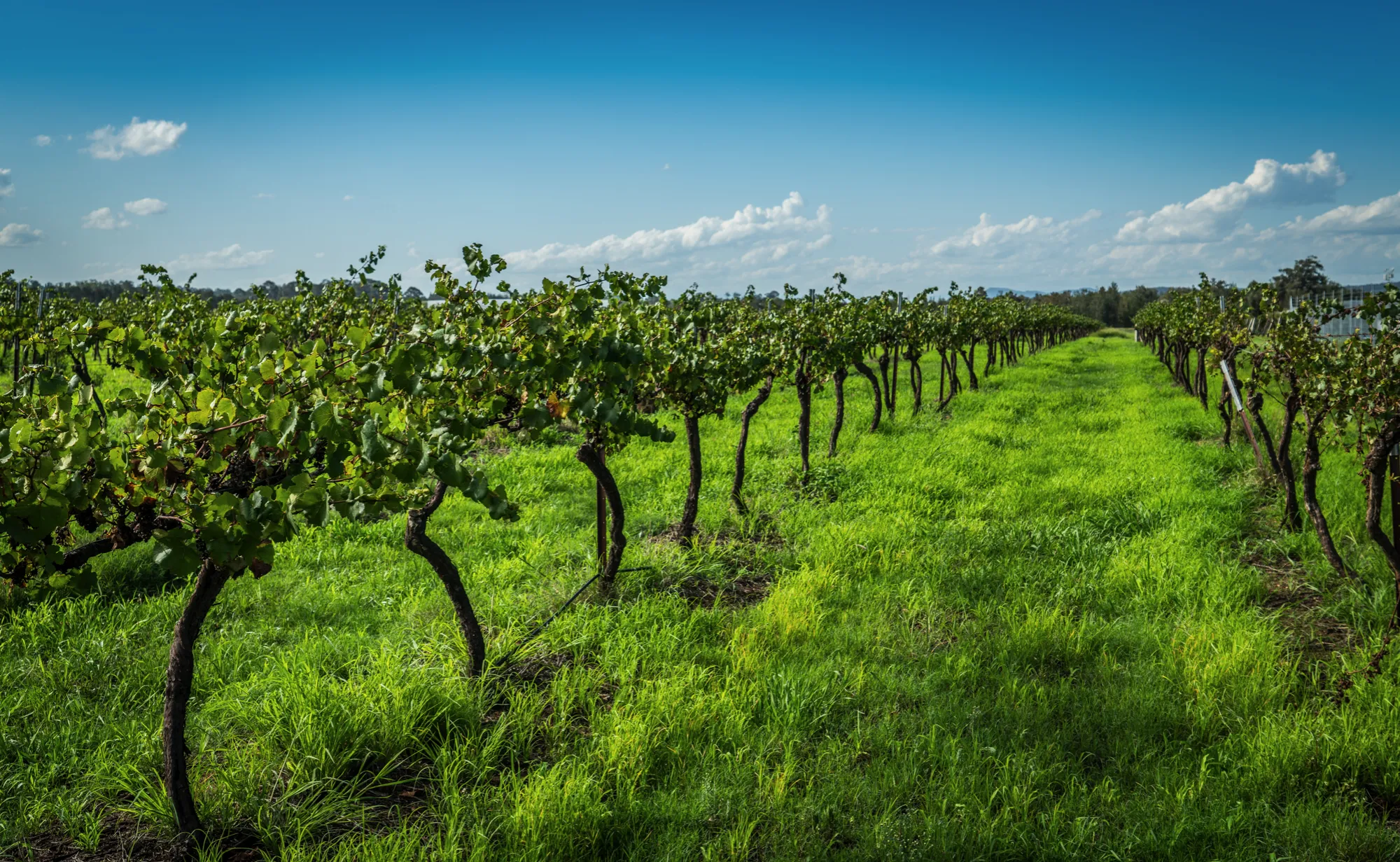Evaluating the Profitability of Mixed-Use Agricultural Properties: A Complete Guide
Agricultural investors and operators increasingly recognize that evaluating the profitability of mixed-use agricultural properties requires a sophisticated approach that goes beyond traditional single-crop analysis. These versatile properties, which combine multiple agricultural enterprises such as cropping, livestock, horticulture, and value-added processing on one holding, present unique opportunities and challenges that demand specialized assessment techniques.
When evaluating the profitability of mixed-use agricultural properties, you must consider the complex interplay between different revenue streams, shared infrastructure costs, and operational synergies. At Agribusiness Horizons, we help clients navigate these complexities through comprehensive financial analysis and strategic advisory services. Our expertise in agricultural property transactions ensures that investors can make informed decisions about these sophisticated agricultural assets. Contact us today to discuss how we can assist with your mixed-use property evaluation needs.
This guide provides a comprehensive framework for assessing the financial viability of mixed-use agricultural properties, covering everything from revenue stream analysis to risk assessment and long-term sustainability planning. You will learn proven methodologies for evaluating these complex assets and understand how to maximize their profit potential.
Understanding Mixed-Use Agricultural Property Fundamentals
Mixed-use agricultural properties represent a strategic approach to land utilization that maximizes productivity through diversification. These properties typically integrate multiple agricultural enterprises, creating opportunities for revenue optimization and risk mitigation that single-use properties cannot achieve.
The complexity of these operations requires a thorough understanding of how different agricultural enterprises interact within a single property framework. Successful mixed-use properties often feature complementary activities such as grain production paired with livestock operations, where crop residues provide feed while livestock contribute organic matter to soil health. This integration creates operational efficiencies that can significantly impact overall profitability.
Modern mixed-use properties may also incorporate value-added processing facilities, agritourism components, or renewable energy generation. These additional revenue streams can provide substantial financial benefits while creating more resilient business models. However, they also introduce additional complexity in terms of management, regulatory compliance, and capital requirements.
The location and infrastructure of mixed-use properties play crucial roles in their profitability potential. Properties with excellent transport links, reliable water supplies, and proximity to processing facilities or markets often command premium valuations due to their operational advantages.
Revenue Stream Analysis for Mixed-Use Properties
Comprehensive revenue analysis forms the foundation of evaluating the profitability of mixed-use agricultural properties. Each enterprise within the property must be assessed individually before examining their collective contribution to overall profitability.
Primary agricultural enterprises typically include cropping operations, livestock production, horticulture, and forestry. Each enterprise has distinct revenue patterns, with some providing seasonal income while others generate more consistent cash flows throughout the year. Understanding these patterns is essential for accurate financial modeling and cash flow planning.
Secondary revenue streams often provide significant value-added opportunities. These may include processing facilities that add value to raw agricultural products, storage and handling services for neighboring properties, or contract services using specialized equipment. These activities can substantially increase per-hectare returns while utilizing existing infrastructure more efficiently.
Emerging revenue opportunities in mixed-use properties include carbon credit generation, renewable energy production, and biodiversity conservation payments. These environmental services are becoming increasingly valuable as markets for ecosystem services mature and regulatory frameworks evolve.
The timing and reliability of different revenue streams must be carefully evaluated. Some enterprises provide immediate returns while others require longer establishment periods. Balancing quick-return activities with longer-term investments helps optimize both cash flow and overall profitability when evaluating the profitability of mixed-use agricultural properties.
Cost Structure and Operational Efficiency Assessment
Understanding the cost structure of mixed-use agricultural properties requires detailed analysis of both shared and enterprise-specific expenses. Shared costs, such as management, infrastructure maintenance, and utilities, must be allocated appropriately across different enterprises to accurately assess individual profitability.
Labor costs represent a significant component of operational expenses, and mixed-use properties often achieve efficiencies through cross-training workers and utilizing labor across multiple enterprises. Seasonal labor requirements can be balanced by combining enterprises with different peak activity periods, reducing overall labor costs per unit of production.
Infrastructure costs in mixed-use properties can be optimized through strategic planning and shared utilization. For example, storage facilities can serve multiple enterprises, while transport infrastructure benefits all operations. However, specialized equipment and facilities for different enterprises can increase capital requirements and depreciation expenses.
Input costs, including fertilizers, feed, seeds, and chemicals, vary significantly between enterprises. Mixed-use properties may achieve purchasing efficiencies through bulk buying or by producing inputs internally. For instance, properties that produce their own feed grains can reduce livestock production costs while creating internal demand for crop production.
Maintenance and repair costs for mixed-use properties can be complex due to the variety of equipment and infrastructure required. However, economies of scale in maintenance services and parts purchasing can offset some of these complexities.
Financial Analysis Methods and Metrics
Evaluating the profitability of mixed-use agricultural properties requires sophisticated financial analysis techniques that account for the complexity of multiple revenue streams and cost centers. Traditional single-enterprise analysis methods must be adapted to handle the interconnected nature of mixed-use operations.
Cash flow analysis forms the cornerstone of financial evaluation, with particular attention to seasonal variations and enterprise-specific timing. Monthly cash flow projections should account for the different revenue and expense patterns of each enterprise, identifying potential cash flow gaps and surplus periods.
Return on investment calculations must consider both the overall property return and individual enterprise contributions. This analysis helps identify which enterprises are driving profitability and which may require optimization or restructuring. Net present value calculations should incorporate appropriate discount rates that reflect the risk profile of agricultural investments.
Sensitivity analysis is particularly important for mixed-use properties due to their exposure to multiple commodity markets and production risks. Testing scenarios with different price assumptions, yield variations, and cost changes helps identify the most critical factors affecting profitability.
Benchmarking against comparable properties and industry standards provides context for financial performance. However, finding truly comparable mixed-use properties can be challenging, requiring careful adjustment for differences in scale, location, and enterprise mix.
Risk Assessment and Mitigation Strategies
Mixed-use agricultural properties face unique risk profiles that require comprehensive assessment and strategic mitigation approaches. While diversification can reduce overall risk, it also introduces complexity in risk management that must be carefully evaluated.
Production risks vary significantly between enterprises, with weather, disease, and pest pressures affecting different activities in different ways. This diversity can provide natural risk mitigation, as poor performance in one enterprise may be offset by strong performance in another. However, some risks, such as drought or extreme weather events, can impact multiple enterprises simultaneously.
Market risks in mixed-use properties are influenced by exposure to multiple commodity markets, each with distinct price cycles and demand patterns. While this diversification can reduce overall price risk, it also requires more sophisticated market monitoring and risk management strategies.
Operational risks include the complexity of managing multiple enterprises, potential conflicts between different activities, and the need for diverse skill sets in management and labor. These risks can be mitigated through proper planning, training, and systems implementation.
Financial risks may be elevated due to higher capital requirements and more complex cash flow patterns. However, the stability provided by diversified revenue streams can also improve creditworthiness and access to favorable financing terms.
Technology Integration and Innovation Opportunities
Modern mixed-use agricultural properties increasingly rely on technology integration to optimize operations and enhance profitability. Precision agriculture technologies, automated systems, and data analytics platforms can provide significant competitive advantages when properly implemented.
Farm management software systems designed for mixed-use operations can track performance across multiple enterprises, providing insights into resource allocation, cost management, and profitability optimization. These systems enable more sophisticated financial analysis and operational decision-making.
Automation technologies can reduce labor costs and improve consistency across different enterprises. However, the capital requirements for automation must be carefully evaluated against potential savings and productivity improvements.
Data analytics and monitoring systems provide real-time insights into operational performance, enabling proactive management decisions. These technologies are particularly valuable in mixed-use properties where multiple variables must be monitored simultaneously.
Innovation opportunities in mixed-use properties often arise from the integration of different enterprises and the potential for developing new products or services. Properties that can adapt to emerging market opportunities while maintaining core agricultural operations often achieve superior long-term profitability.
Market Positioning and Competitive Advantages
Successful mixed-use agricultural properties often develop unique market positioning that leverages their diversification and operational flexibility. This positioning can create competitive advantages that enhance profitability and market resilience.
Brand development opportunities arise from the story and sustainability credentials that mixed-use properties can offer. Consumers increasingly value agricultural products that demonstrate environmental stewardship and operational diversity, creating premium market opportunities.
Direct marketing channels can be particularly effective for mixed-use properties that produce a variety of products. Farm-to-table operations, farmers markets, and agritourism activities can capture additional value while building customer relationships.
Supply chain integration opportunities may emerge from the ability to provide multiple products to single customers or to participate in value-added processing. These relationships can provide more stable revenue streams and improved margins.
Flexibility in production planning allows mixed-use properties to respond to market opportunities more effectively than specialized operations. This adaptability can be particularly valuable in volatile market conditions.
Comparison of Mixed-Use Property Types
| Property Type | Primary Enterprises | Revenue Stability | Capital Requirements | Management Complexity |
|---|---|---|---|---|
| Crop-Livestock Integration | Grains, Cattle | Moderate | Moderate | Moderate |
| Diversified Horticulture | Multiple Fruits/Vegetables | Variable | High | High |
| Agritourism Integration | Crops, Tourism | Seasonal | High | High |
| Processing Integration | Production, Processing | Stable | Very High | Very High |
| Renewable Energy Hybrid | Agriculture, Solar/Wind | Very Stable | Very High | Moderate |
This comparison illustrates the trade-offs between different mixed-use property approaches when evaluating the profitability of mixed-use agricultural properties. Each type offers distinct advantages and challenges that must be carefully considered in financial analysis.
Strategic Advisory Services for Mixed-Use Properties
At Agribusiness Horizons, we provide specialized advisory services for investors and operators considering mixed-use agricultural properties. Our comprehensive approach combines financial analysis, operational assessment, and strategic planning to help clients maximize the potential of these complex assets.
Our valuation services for mixed-use properties incorporate sophisticated modeling techniques that account for the unique characteristics of diversified operations. We analyze each enterprise component while considering operational synergies and shared infrastructure benefits. This comprehensive approach ensures accurate valuations that reflect the true potential of mixed-use properties.
Strategic planning services help clients optimize their enterprise mix and operational structure. We assess market opportunities, evaluate resource allocation, and develop implementation strategies that maximize profitability while managing risk. Our expertise in agricultural markets and operational efficiency enables us to provide actionable recommendations for property optimization.
Due diligence services for mixed-use property acquisitions require specialized expertise in multiple agricultural sectors. We coordinate comprehensive assessments that evaluate each enterprise component, shared infrastructure, and operational integration. This thorough approach helps buyers understand the full potential and risks associated with complex agricultural properties.
Our post-acquisition support services help clients implement optimization strategies and navigate the operational challenges of mixed-use properties. We provide ongoing advisory services that adapt to changing market conditions and operational requirements, ensuring long-term success in these sophisticated agricultural investments.
Future Trends and Emerging Opportunities
The agricultural sector continues to evolve, creating new opportunities for mixed-use properties that can adapt to changing market conditions and consumer preferences. Understanding these trends is crucial for long-term profitability assessment and strategic planning.
Sustainability and environmental stewardship are becoming increasingly important market drivers. Mixed-use properties that can demonstrate environmental benefits through diversified operations, carbon sequestration, and biodiversity conservation are likely to command premium valuations and access to specialized financing.
Technology integration will continue to transform agricultural operations, with mixed-use properties potentially benefiting from economies of scale in technology adoption. Advanced monitoring systems, precision agriculture tools, and automated processes can provide competitive advantages when implemented across multiple enterprises.
Value-added processing and direct marketing opportunities are expanding as consumers seek transparency and quality in food production. Mixed-use properties with processing capabilities and direct market access may achieve superior margins compared to commodity-focused operations.
Climate adaptation strategies are becoming essential for long-term viability. Mixed-use properties that incorporate climate-resilient enterprises and adaptive management practices are likely to outperform specialized operations in changing environmental conditions.
Conclusion
Evaluating the profitability of mixed-use agricultural properties requires a comprehensive approach that considers the complex interactions between multiple enterprises, shared resources, and operational synergies. Success depends on thorough financial analysis, careful risk assessment, and strategic planning that leverages the unique advantages of diversified operations.
The complexity of these assessments demands specialized expertise and sophisticated analytical tools. While mixed-use properties offer significant opportunities for enhanced profitability and risk mitigation, they also require careful evaluation to ensure that the benefits outweigh the additional management complexity and capital requirements.
When evaluating the profitability of mixed-use agricultural properties, consider these thought-provoking questions: How might emerging environmental markets change the value proposition of diversified agricultural operations? What role will technology integration play in optimizing the performance of multiple enterprises within a single property? How can mixed-use properties adapt to changing consumer preferences while maintaining operational efficiency?
The agricultural sector’s continued evolution presents both challenges and opportunities for mixed-use properties. Those that can successfully integrate multiple enterprises while maintaining operational excellence are likely to achieve superior long-term returns. Contact Agribusiness Horizons today to discuss how our specialized expertise can help you evaluate and optimize mixed-use agricultural property investments for maximum profitability and long-term success.



